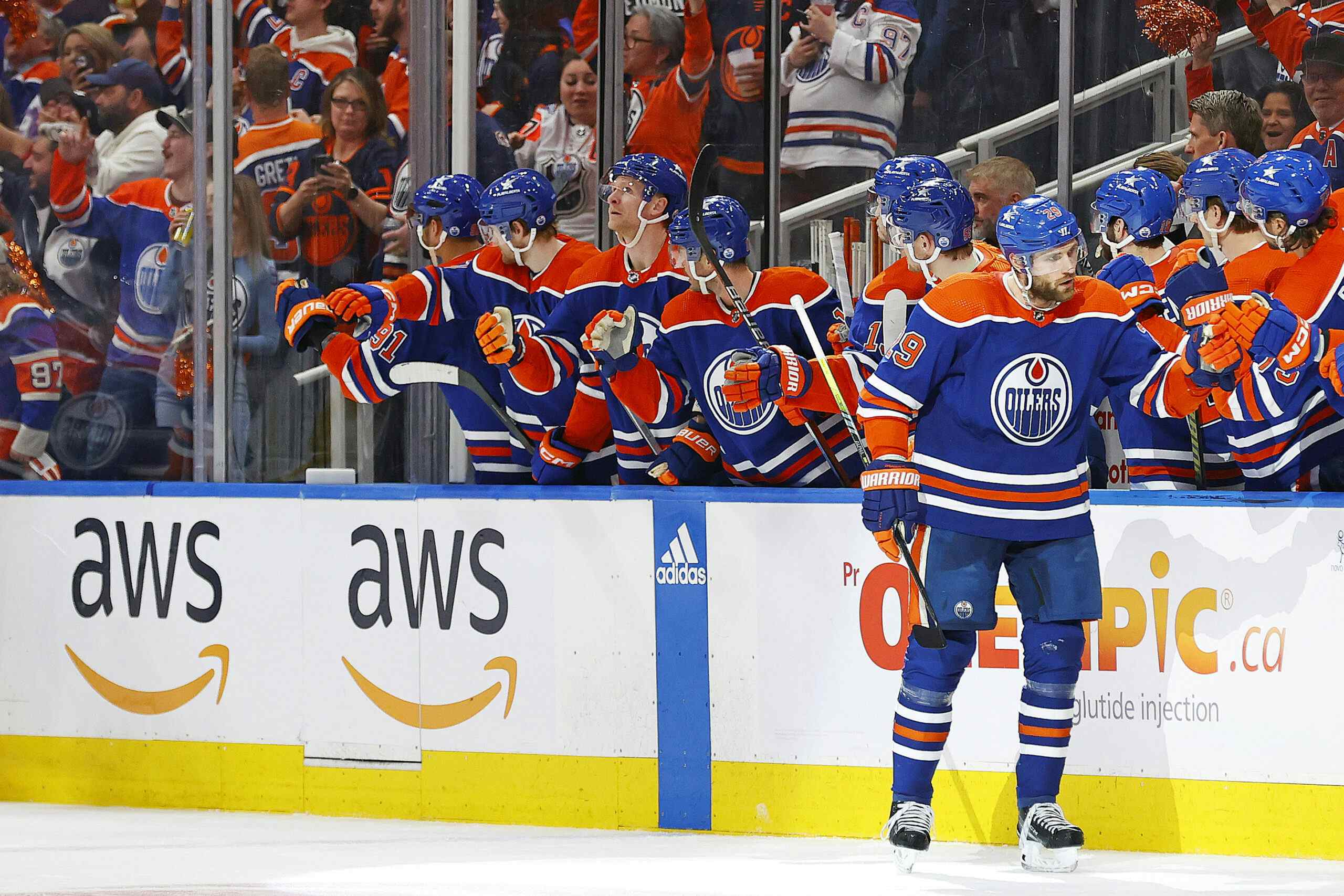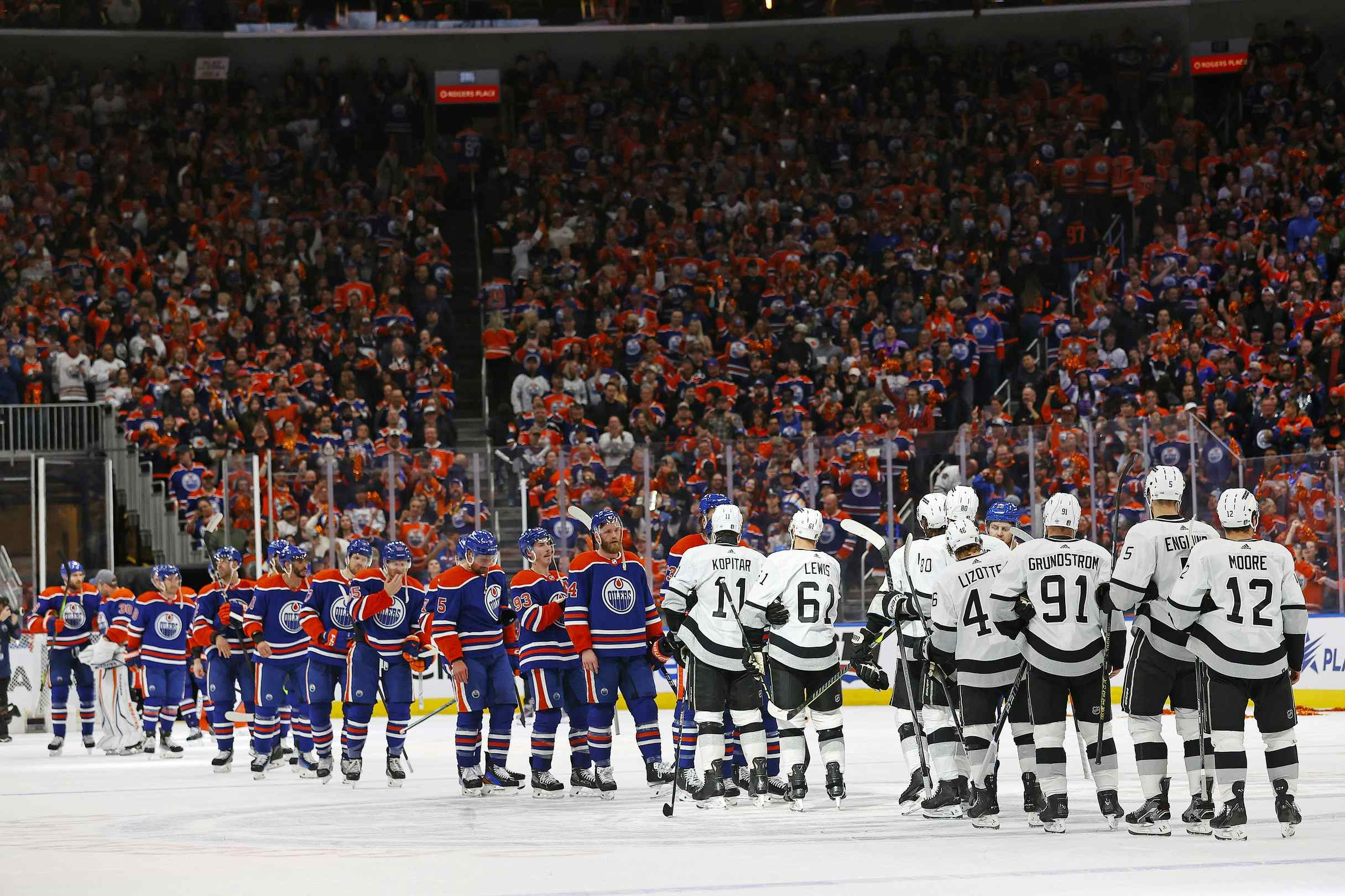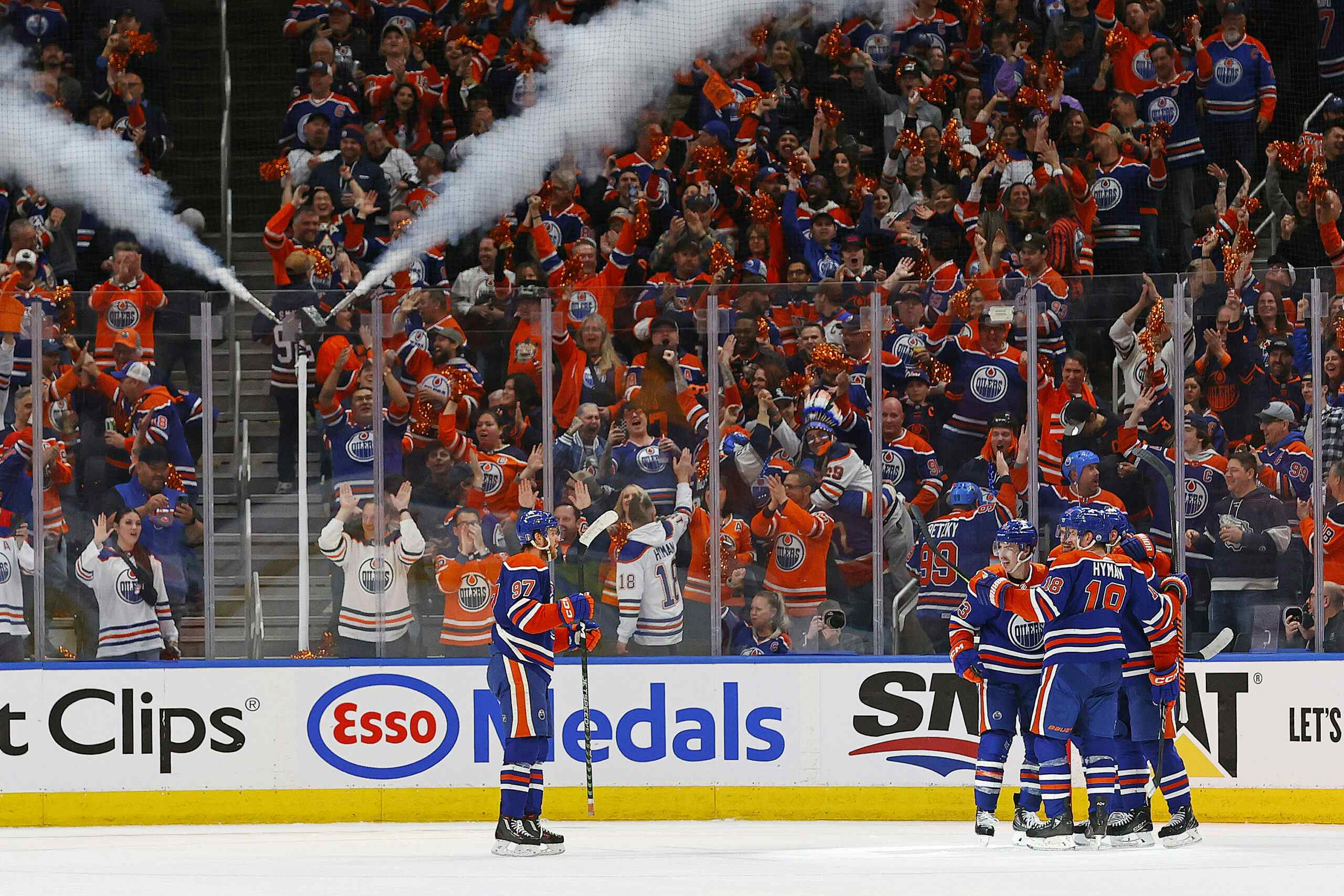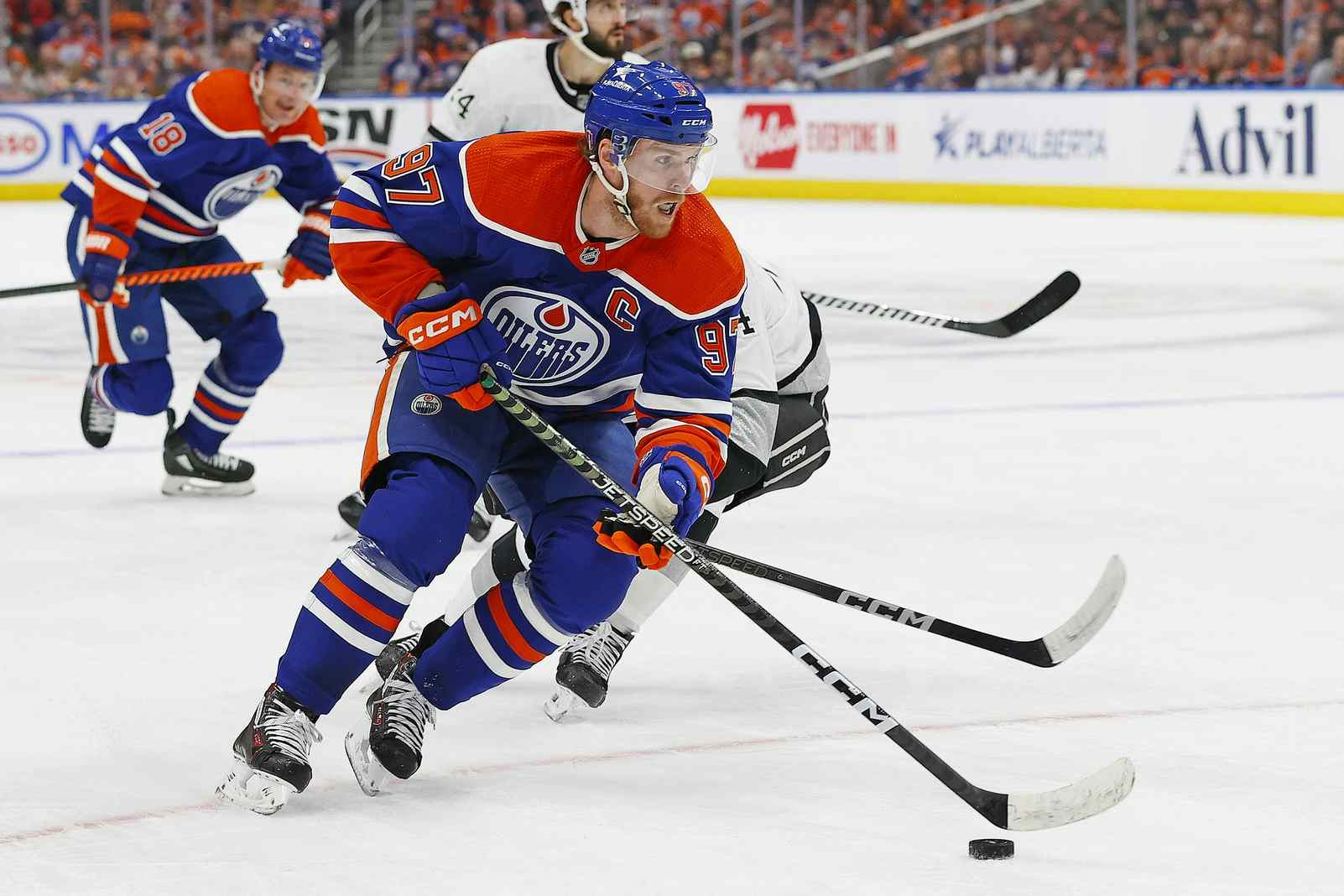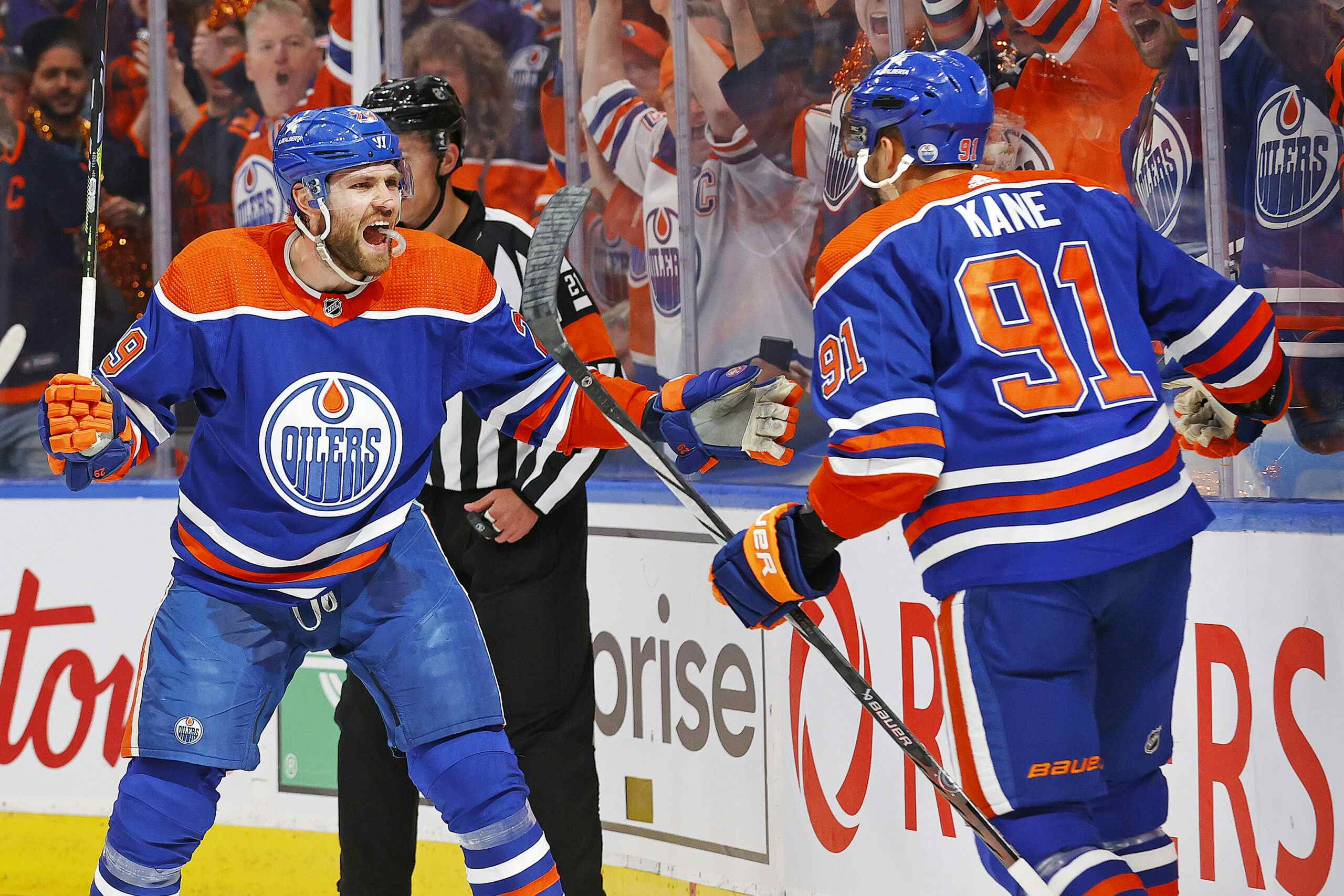WHAT TYPE OF GAME WILL CANADA PLAY?
By Jason Gregor
10 years ago
After winning the 2002 Olympic gold medal, Canada kept the same coaching staff for the 2006 Olympics, but they were unable to match their gold medal run in Turin. Was the 2002 team that much better? Did they play a different style, even though the ice surface in Provo, Salt Lake was Olympic size (200 feet x 100 feet) and the same as Turin, Italy?
Will Canada play a different style in Sochi than they did in Vancouver, 2010? Will they want different style of players?
Ken Hitchcock was an associate coach in 2002, 2006 and 2010 and he’ll be on the 2014 staff as well. Brownlee and I chatted with Hitchcock and got his thoughts on the differences of the ice surfaces, types of players they want on the team and more.
Ken Hitchcock was an associate coach in 2002, 2006 and 2010 and he’ll be on the 2014 staff as well. Brownlee and I chatted with Hitchcock and got his thoughts on the differences of the ice surfaces, types of players they want on the team and more.
Jason Gregor: Does the coaching strategy or your style of team change significantly because you’re on the Sochi ice surface compared to the team that you had in Vancouver in 2010?
Ken Hitchcock: I’m not sure how much the team changes, but your strategy changes a lot. Probably the easiest way to describe it is that the game in North America, or the way that we played it in 2010, is a linear game. So basically straight lines, chip it in, chip it out, and direct the pack. When you play on the big ice surface you’ve got to find the weak side of the ice all of the time.
So you play a game of width in the big surface where you play a game of depth on the smaller surface. There is a significant difference and that’s why mobility on the back end, mobility up front is so important because the only way you’re going to get an odd man rush on the big surface is that you’ve got to add numbers. You’ve got to bring an extra defenceman or two into the rush, because you’re not going to get odd man rushes due most game plans are too conservative by a lot of European teams.
Gregor: Do you automatically need more speed in a width game?
Hitchock: Yes. You need two things; you need a really high level of hockey sense because you’ve really got to have people who feel comfortable using the width of the ice. You’re not going to be able skate with the puck in straight lines; you’re going to have to buy some time to move it sideways. Secondly you’re going to need people who have the ability to create their own individual one-on-one space. The way teams play in Europe is they forecheck when they can, and if they can’t they just stay in the neutral zone. So you’ve got to know that you’re going to be going through numbers.
One of the difficulties that we had with 2006 was that we took the team that won the gold in ’04 and looking back on it we didn’t have enough team speed. Out of respect we played those players, but looking back on it, we didn’t have enough team speed to take advantage of that big surface that we had in ’06.
*** Interesting to hear Hitchcock’s take on this. They only had seven players from the 2002 team on the 2006 team. I’ll have a chart down below. Scott Niedermayer was injured prior to the 2006 Olympics and that really hurt. When you look at the 2006 roster you notice the blueline didn’t have a lot of speed. Adam Foote, Robin Regehr, Rob Blake was 36 years old.
After listening to Hitchcock describe the type of player he wants, Eberle and Hall each fit into the two catergories the coaches will want. Eberle has a very high hockey sense, while Hall is very good at creating one-on-one space. They will be in tough to make the team, and both will need to be very good from October-December, but if Hall plays like he did this year and Eberle does like he did in 2011/2012 they will be in the conversation.***
Robin Brownlee: I think that when coaches talk about speed, people maybe mistake it for top end speed. You need quickness and lateral movement as well, isn’t that just as important as how fast a guy can go when he finally gets up a head of steam?
Hitchcock: Yeah, well that’s why you see guys on the back end like [Dan] Hamhuis, [Marc] Methot, [Travis] Hamonic, that’s why those guys are coming to camp. Those are players that have proven their wealth and their ability on the big surface in world championships. That’s why those guys are being brought into camp because those guys have proven to be effective players on the big ice. They’ve got mobility, they’ve got size. A lot of the game defensively is being able to control players one-on-one, because there is lots of room in the corners to play with, and a lot more room behind the net.
I think what a lot of people don’t understand is the depth of the game. There is the width that’s different, there’s 15 foot difference, but there’s also depth. There’s very short distance between the blue line and the goal line. All of the depth is made up behind the goal; there is 2.5 feet difference behind the goal net. So having a defenceman who is able to play one-on-one and be able to control the play is really important.
Brownlee: You mentioned Travis Hamonic. Oilers’ fans know him well as the guy who murdered Taylor Hall at the Memorial Cup. This young man has risen pretty quickly through the ranks hasn’t he? Talk about him a little bit.
Hitchcock: Yeah, he’s really had a big impact on the Island there. He’s been tremendous as far as being able to play against top players and he’s done it for a couple of years. For such a young player to play with that level of maturity is really, really impressive. So being a left shot, having mobility and size and strength like he does, his game has a lot of maturity well beyond his age and I think everybody has been really impressed. When you look at him, he’s played against a lot of players. He’s played against [Claude] Giroux, he plays against [Rick] Nash, he played against [Ilya] Kovalchuk; he knows how to play against top players.
Gregor: I think that Canada has the best group of defenders out of all of the teams in this tournament. Do you think that you need to have at least two left handed shooters? When you have the best of the best defencemen does it really matter if they are a left or a right shot?
Hitchcock: No. If you’re going to play on the offside, however, you have to either have quick feet or a quick stick. You’ve got to have both, or at least one of them that’s really defined or it doesn’t work. So the guys that we have, I know [Alex] Pietrangelo can play the left side no problem, I know that [Shea] Weber can play the left side. We know that [Drew] Doughty can because he played it in the Olympics, so there is no issue at all there for us. If we came and we played six right shots it wouldn’t matter for us, but it would if a guy didn’t have a quick stick or mobility.
*** I don’t see Canada having an issue at all on their blueline. Doughty, Weber, Keith, Seabrook, Subban, Letang, Pietrangelo and Staal are all solid, but only Staal and Keith shoot left. They are all good skaters and there is a nice mix of skill, brawn, smarts and experience. Bouwmeester will get strong consideration as well, because he shoots left and Doug Armstrong and Hitchcock will see him every game, not to mention Staal is coming off a serious concussion.***
Brownlee: Hitch how to do you sense the approach to the forward lines might go? Are you going to roll four in the sense that everyone that wants to can go out and get it or are we going to see some of the offensive players put in two-way roles?
Hitchcock: Well two or three things there Robin. Number one the game is quicker. This is a two hour and five, to a two hour and fifteen minute game; that is twenty minutes quicker than a regular NHL game. Number two is that the intermissions are short so there is no chance to catch your breath. You have to play four lines. Whatever it is you think your chemistry is in game one in game two I guarantee it’s going to change. We never settled on our lineup until the 4th or 5th game in 2010, so it changed quite a bit.
The third thing, which for me was really important, we had a scoring line basically [Jonathan] Toews, [Rick] Nash and [Mike] Richards that ended up being our checking line. I think that everybody has to be able to play 200 feet in this game, but more importantly smart players end up having to check. We were lucky that we had smart guys like Toews and Nash who are really able to check, be effective and it helped us a lot. But yeah you’ve got to play four lines because the puck is dropped so quick, there is no rest. The intermissions are quick, there is no rest. It just seems as though everything is done at this furious pace off and on the ice and you need everybody to be able to contribute.
***Toews is the best two-way forward on the team. Not only did he check the opposition in 2010, he led the team in scoring with 1 goal, 8 points and he was +9 in 7 games. ***
FINAL THOUGHTS…

How many returnees will we see at the 2014 Olympics?
Roberto Luongo will be one of the goalies, whether he starts or not depends on how he plays early this season.
Weber (all-star in 2010), Doughty and Keith are automatics, while Seabrook is close. The other four spots will be filled with first-timers. Pronger and Niedermayer are retired, and I don’t see Dan Boyle making the squad.
Crosby, Toews (all-star in 2010), E.Staal, Nash, Getzlaf and Bergeron seem like locks. I’d bet heavily that Corey Perry makes it as well, while M.Richards will be in tough. I don’t see Thornton, Morrow, Iginla, Marleau and Heatley returning. That leaves seven spots up for grabs. Rosters are now 25 players, 3 goalies, 8 D-men and 14 forwards, unlike in 2010 when it was 23.
Canada could have 12 returnees. The average age of the 2010 team was 27.4, and the only potential returnee over 29 will be Luongo.
2002 VS. 2006
| 2002 | 2006 | |||||
| POS | PLAYER | AGE | POS | PLAYER | AGE | |
| G | Martin Brodeur | 29 | G | Martin Brodeur | 33 | |
| G | Curtis Joseph | 34 | G | Roberto Luongo | 26 | |
| G | Ed Belfour | 36 | G | Marty Turco | 30 | |
| D | Rob Blake | 32 | D | Rob Blake – A | 36 | |
| D | Eric Brewer | 22 | D | Jay Bouwmeester | 22 | |
| D | Adam Foote | 30 | D | Adam Foote | 34 | |
| D | Ed Jovanovski | 25 | D | Bryan McCabe | 30 | |
| D | Al MacInnis | 38 | D | Chris Pronger – A | 31 | |
| D | Scott Niedermayer | 28 | D | Wade Redden | 28 | |
| D | Chris Pronger (A) | 27 | D | Robyn Regehr | 25 | |
| F | Theoren Fleury | 33 | F | Todd Bertuzzi | 30 | |
| F | Simon Gagné | 21 | F | Shane Doan | 29 | |
| F | Jarome Iginla | 24 | F | Kris Draper | 34 | |
| F | Paul Kariya | 27 | F | Simon Gagné – A | 25 | |
| F | Mario Lemieux (C) | 36 | F | Dany Heatley | 25 | |
| F | Eric Lindros | 28 | F | Jarome Iginla – A | 28 | |
| F | Joe Nieuwendyk | 35 | F | Vincent Lecavalier | 25 | |
| F | Owen Nolan | 30 | F | Rick Nash | 21 | |
| F | Michael Peca (A) | 27 | F | Brad Richards | 25 | |
| F | Joe Sakic (A) | 32 | F | Joe Sakic – C | 36 | |
| F | Brendan Shanahan | 33 | F | Ryan Smyth | 29 | |
| F | Ryan Smyth | 25 | F | Martin St. Louis | 30 | |
| F | Steve Yzerman (A) | 36 | F | Joe Thornton | 26 |
Niedermayer and Jovanovski made the 2006 team, but were injured and replaced by Bouwmeester and McCabe, but when you look at the 2006 roster you notice they weren’t the fastest team.
The 2010 team only had Thornton, Nash, Iginla, Pronger, Luongo and Brodeur as returnees. The average age of the 2002 team was 29.9 and in 2006 it was 28.6. They got younger in 2010 and won, and they likely will be around the 26 to 27 age range in 2014.
Outside of the regular season excitement it will be interesting to watch which players grab the coaching staff’s attention.
RECENTLY BY JASON GREGOR
Recent articles from Jason Gregor

